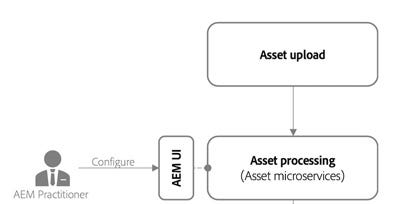
Abstract
Adobe Experience Manager Assets as a Cloud Service offers a cloud-native solution to manage large scale assets and handle Dynamic Media operations. In this blog post, we will look at the advantages of AEM Assets as a Cloud Service, and how Asset Microservices plays a unique role and greatly helps with performance and speed.
First off, both AEM Assets as a Cloud Service and Asset Microservices are always current with the latest features. Adobe provides a daily update of the AEM Assets Base Image as well as daily hotfix releases for both AEM Assets and Asset Microservices. In addition, AEM Assets as a Cloud Service provides a monthly release of new features, while Asset Microservices provides a weekly release of new features.
The architecture of AEM Assets as a Cloud Service is uniquely designed to improve Asset handling performance. A client, such as a web browser, sends an upload request to Adobe Experience Manager and then directly uploads the binary asset to cloud storage. Once this is complete, AEM is notified and a processing request is sent to Asset Microservices, which provides a cloud-native method to process assets. Processing Profiles are configured in AEM Assets by an AEM Practitioner that specify which renditions, as well as other tasks, to generate.
In addition, custom workflows can be setup that do post processing. For example, data could be fetched from an enterprise system using a workflow and then added to the Asset properties. The power of this, and the resource saving, is that it can be done directly, without having to use the Workflow Launcher, which can greatly save on resources.
Due to this architecture, Adobe estimates that the Asset upload is two to ten times faster using our cloud native solution. In addition, because the architecture is using Microservices, it will scale elastically to handle any increases in demand. This diagram shows, in detail, what occurs using the Microservices architecture and it’s advantages.
Read Full Blog
Q&A
Please use this thread to ask the related questions.
Kautuk Sahni






